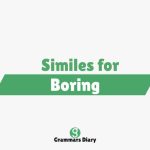“Furthermore” is a widely used transitional word that helps to add information or reinforce a point in writing and speech. For instance, when someone says, “The movie had great visuals. Furthermore, the storyline was compelling,” the word emphasizes the addition of another relevant detail that supports or enhances the original statement.
However, while “furthermore” is effective in formal contexts, expanding your vocabulary with alternative expressions can make your writing or conversation feel more dynamic, natural, and suited to a wider range of audiences. This article explores various synonyms and equivalent phrases, each explained with its own nuance, meaning, and practical usage.
Other Ways to Say “Furthermore”
1. Moreover
Example: “The proposal is well-researched. Moreover, it addresses the client’s concerns directly.”
Meaning: In addition to what has already been stated. This transition adds emphasis by introducing an equally important supporting point.
Usage: Best suited for formal writing, such as reports, research papers, and business communication.
2. In Addition
Example: “She’s an excellent researcher. In addition, she’s skilled at presenting complex data clearly.”
Meaning: Adds supplementary information that strengthens or expands the previous point.
Usage: A highly flexible phrase that works well in both formal and informal contexts.
3. Also
Example: “The new software improves workflow. Also, it reduces operational costs.”
Meaning: Signifies another point of relevance or agreement with the previous statement.
Usage: Common in everyday speech and informal writing; can sometimes be seen in formal contexts when used sparingly.
4. What’s More
Example: “He finished the project ahead of schedule. What’s more, he under budget.”
Meaning: Emphasizes an even more surprising or impressive addition to the previous statement.
Usage: Often used in conversational or persuasive writing to highlight benefits or accomplishments.
5. As Well
Example: “The course covers grammar thoroughly and includes writing workshops as well.”
Meaning: Adds a similar or related element without introducing a completely new topic.
Usage: Natural in spoken English and informal writing, though it can be used formally with proper structure.
6. In Like Manner
Example: “She prepared for the exam thoroughly. In like manner, her brother adopted a detailed study plan.”
Meaning: Indicates that something was done in a similar or comparable way.
Usage: Formal tone, typically found in academic writing or older literary styles.
7. Too
Example: “He enjoys painting. He writes poetry too.”
Meaning: Indicates additional information, usually at the end of a sentence for casual flow.
Usage: Common in everyday conversation and informal writing.
8. In the Same Way
Example: “The company values innovation. In the same way, it encourages creative problem-solving among employees.”
Meaning: Shows parallelism between two ideas, reinforcing a consistent approach or viewpoint.
Usage: Effective in analytical writing and structured arguments.
9. Not Only That
Example: “The event was well-attended. Not only that, but the feedback was overwhelmingly positive.”
Meaning: Highlights that the following point is even more impressive or noteworthy than the one before.
Usage: Works well in persuasive or engaging writing, especially when building excitement or momentum.
10. By the Same Token
Example: “She demands excellence from her students. By the same token, she holds herself to high standards.”
Meaning: Indicates that two things are logically or morally equivalent.
Usage: Typically found in persuasive writing or ethical arguments, often in formal contexts.
11. On Top of That
Example: “They offered a full refund. On top of that, they gave a voucher for future purchases.”
Meaning: Adds extra information that makes the previous point even more favorable or dramatic.
Usage: Casual and conversational; not commonly used in formal writing.
12. In Like Fashion
Example: “The first team submitted a detailed proposal. In like fashion, the second team presented an equally thorough plan.”
Meaning: Suggests that two actions were carried out in a similar manner.
Usage: Slightly formal and more often used in written arguments or essays.
13. Correspondingly
Example: “The sales team exceeded their targets. Correspondingly, their bonuses were higher this quarter.”
Meaning: Shows a direct, related effect or response to the first idea.
Usage: Formal writing, especially when explaining cause and effect.
14. Equally
Example: “The movie was visually stunning. Equally, the soundtrack was powerful and moving.”
Meaning: Indicates the second idea is as important or impactful as the first.
Usage: Works well in both written and spoken English, especially when comparing attributes or ideas.
15. Likewise
Example: “The CEO emphasized employee well-being. Likewise, department heads adopted flexible working hours.”
Meaning: Indicates a similarity or agreement in action or perspective.
Usage: Suitable for both formal and semi-formal writing, especially in reports or structured arguments.
16. Additionally
Example: “The plan includes budget forecasts. Additionally, it outlines long-term growth strategies.”
Meaning: Adds another related point to strengthen the original idea or proposal.
Usage: Highly appropriate for formal documents, presentations, and analytical writing.
17. Plus
Example: “She’s a skilled designer. Plus, she’s great with client communication.”
Meaning: An informal way to introduce a bonus point or extra detail.
Usage: Common in spoken language and casual writing; best avoided in highly formal contexts.
18. Along with That
Example: “The package includes a free consultation. Along with that, you’ll receive a 10% discount.”
Meaning: Adds another element that accompanies the first.
Usage: Friendly and conversational; works well in marketing copy or informal explanations.
19. As an Added Bonus
Example: “This vacuum cleaner is powerful. As an added bonus, it comes with a lifetime warranty.”
Meaning: Introduces an extra advantage or positive feature.
Usage: Common in promotional writing or persuasive content meant to entice readers.
20. And Then Some
Example: “The training program covers all the basics—and then some.”
Meaning: Suggests that more is provided than what was expected.
Usage: Very informal and conversational; effective when trying to impress or exaggerate in a casual tone.
21. Over and Above That
Example: “She’s highly educated. Over and above that, she has years of experience.”
Meaning: Adds a significant point that goes beyond the previous idea.
Usage: Formal tone, appropriate for structured writing or detailed descriptions.
22. Besides That
Example: “He’s an expert in finance. Besides that, he teaches at a local college.”
Meaning: Adds supplementary information that may not directly reinforce but still contributes context.
Usage: Suitable in both spoken and written English, leaning toward informal usage.
23. Too Much the Same
Example: “Both solutions are expensive—too much the same, really, to make a real difference.”
Meaning: Emphasizes an additional similarity, often with a slightly critical tone.
Usage: Less common and more stylistic; may be found in opinion pieces or narratives.
24. Not to Mention
Example: “She’s efficient and organized—not to mention incredibly patient with clients.”
Meaning: Adds an additional point that reinforces the positive aspects of a subject.
Usage: Conversational and persuasive; excellent for highlighting selling points or benefits.
25. As Well As That
Example: “He manages operations effectively, as well as that, he oversees client communications.”
Meaning: Combines and connects two strong supporting statements about the same subject.
Usage: Useful in both written and spoken forms, especially when adding weight to a description.
When to Use Different “Furthermore” Alternatives
In Professional or Business Settings
In business emails, formal reports, or proposals, it’s important to maintain clarity and professionalism. Terms like “Moreover,” “Additionally,” “In Addition,” and “Likewise” work well when outlining data-driven arguments, updates, or feature lists in a structured and respectful tone.
In Academic or Formal Writing
In research papers, scholarly articles, or academic essays, transitions such as “Moreover,” “Correspondingly,” “As well as that,” and “By the same token” help reinforce evidence-based arguments and introduce layered reasoning with authority and sophistication.
In Casual or Creative Conversations
For blogs, social media posts, or conversational writing, casual phrases such as “Plus,” “What’s more,” “Not to mention,” and “On top of that” keep the tone friendly and accessible while still connecting ideas smoothly and effectively.
Conclusion
While “furthermore” is an effective transition for adding information, relying solely on it can make your writing feel repetitive or overly formal. By incorporating these 25 alternatives—ranging from highly formal to casual and creative—you can diversify your language, tailor your tone to different audiences, and enhance the overall readability of your content. Language is a flexible tool, and with a broader vocabulary, your communication becomes more precise, engaging, and effective across various contexts.
Whether you’re drafting an academic paper, crafting persuasive business content, or writing a conversational blog post, choosing the right synonym for “furthermore” can help you build smoother transitions and stronger arguments.
FAQs
What does “furthermore” mean?
“Furthermore” is a transition word used to introduce additional information that supports or elaborates on a previous statement.
Is “furthermore” formal or informal?
“Furthermore” is considered formal and is often used in academic, professional, or written contexts rather than everyday conversation.
Can I use “also” instead of “furthermore”?
Yes, but “also” is more informal and may not carry the same emphasis or structure depending on the context. Use with discretion based on tone.
Which alternatives are best for formal writing?
Words like “Moreover,” “Additionally,” “Correspondingly,” and “In Addition” are preferred in formal and academic settings.
What’s a casual alternative to “furthermore”?
Phrases like “Plus,” “What’s more,” “Not to mention,” and “On top of that” are better suited for informal writing and everyday conversation.











